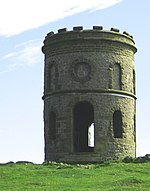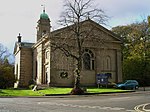Buxton College
1675 establishments in EnglandBuxtonDefunct schools in DerbyshireEducational institutions established in the 1670sUse British English from October 2013

Founded in 1675, Buxton College was a boys' Public School and, from 1923, a grammar school in Buxton, Derbyshire whose site has been expanded since 1990 to be used as the fully co-educational comprehensive Buxton Community School.
Excerpt from the Wikipedia article Buxton College (License: CC BY-SA 3.0, Authors, Images).Buxton College
College Road, High Peak Fairfield
Geographical coordinates (GPS) Address Phone number Website Nearby Places Show on map
Geographical coordinates (GPS)
| Latitude | Longitude |
|---|---|
| N 53.2508 ° | E -1.9202 ° |
Address
Buxton Community School
College Road
SK17 9EA High Peak, Fairfield
England, United Kingdom
Open on Google Maps










